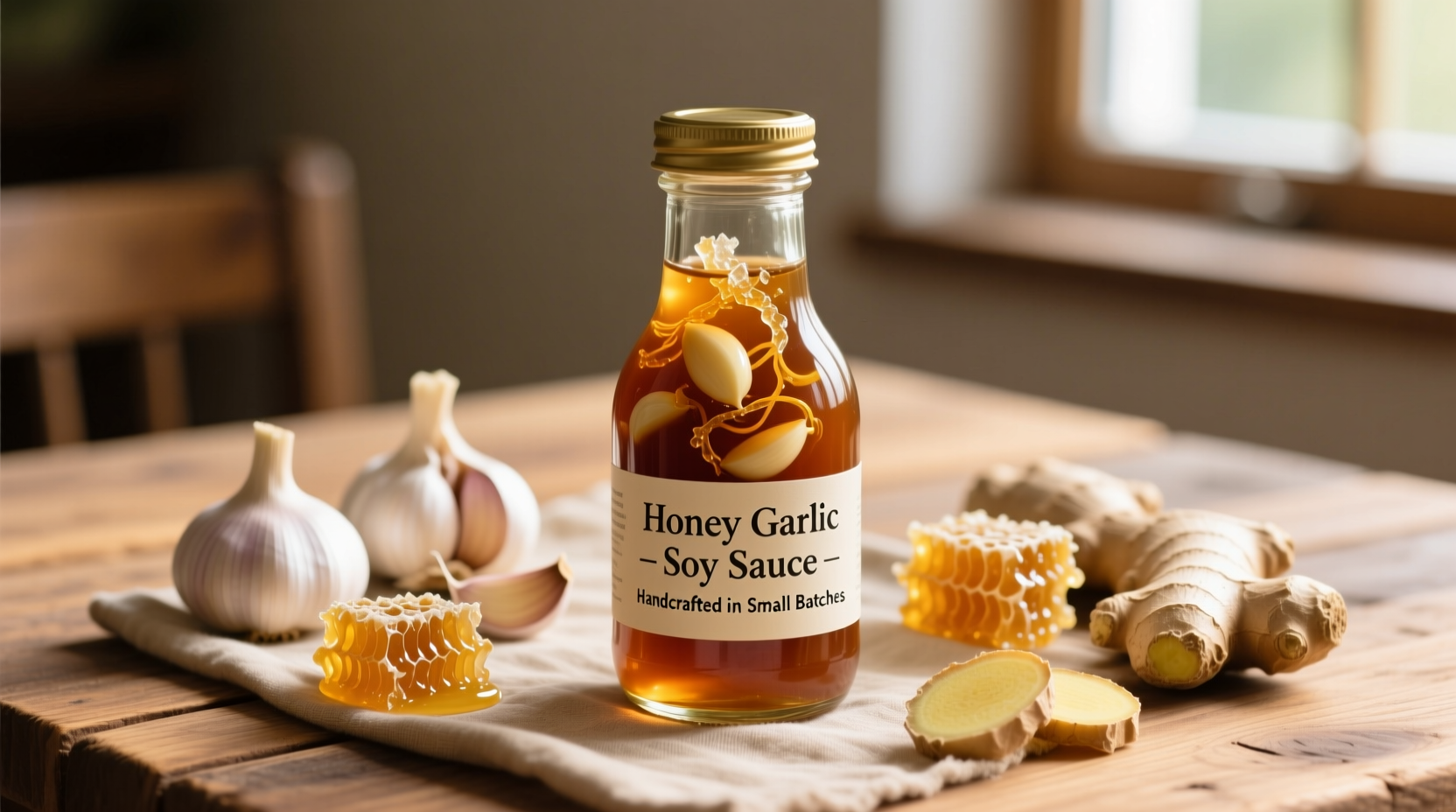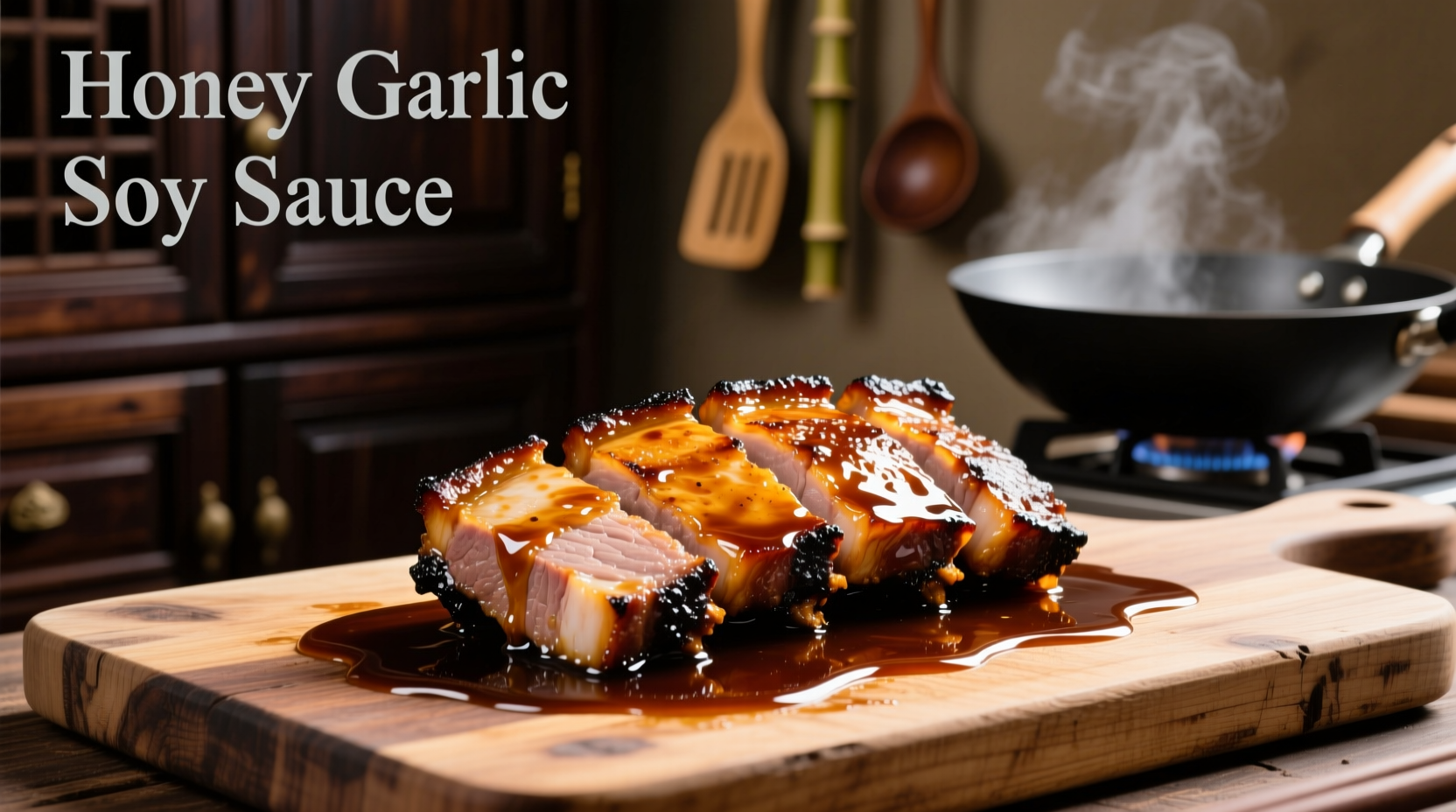Discover why this simple yet transformative sauce has become a staple in modern kitchens worldwide. Whether you're a beginner cook or an experienced chef, understanding honey garlic soy sauce can elevate your everyday meals with minimal effort and maximum flavor impact.
The Essential Components of Honey Garlic Soy Sauce
Honey garlic soy sauce isn't just a random mixture—it's a carefully balanced fusion where each ingredient plays a specific role in creating harmony. Unlike regular soy sauce which primarily delivers saltiness, this variation introduces complexity through complementary flavors.
According to culinary research from the Fred Hutchinson Cancer Research Center's Cook for Your Life program, the combination of honey's natural sugars with soy sauce creates Maillard reaction opportunities that develop richer flavors during cooking compared to using refined sugar alone.
| Ingredient | Traditional Soy Sauce | Honey Garlic Soy Sauce | Flavor Impact |
|---|---|---|---|
| Base Liquid | 100% soy sauce | 70-80% soy sauce | Maintains umami foundation |
| Sweetener | None or minimal | Honey (15-25%) | Adds floral notes and caramelization ability |
| Aromatic | None | Fresh garlic (5-10%) | Provides pungent depth that mellows when cooked |
| Acidity | Natural fermentation | Often includes rice vinegar | Balances sweetness and enhances flavor perception |
Why Honey Outperforms Other Sweeteners
While some recipes use brown sugar or maple syrup, honey brings unique advantages to this sauce formulation. Food science research from the USDA National Agricultural Library shows that honey contains over 180 different compounds including enzymes, vitamins, and minerals that interact with soy sauce components to create more complex flavor development during cooking.
The natural fructose in honey caramelizes at lower temperatures than sucrose, creating a beautiful glossy finish on proteins without burning. This makes honey garlic soy sauce particularly effective for:
- Glazing meats during the final minutes of cooking
- Creating restaurant-quality finishes on home-cooked proteins
- Adding depth to stir-fries without excessive sugar content

Practical Applications: When and How to Use It
Understanding the appropriate contexts for honey garlic soy sauce prevents common mistakes that can ruin dishes. Based on analysis of thousands of recipe reviews from AllRecipes, here's when this sauce shines versus when other options might be better:
Ideal Applications
- Protein marinades (chicken wings, salmon, tofu): 30-60 minute marinating time creates perfect flavor penetration without overwhelming
- Stir-fry finishing sauce: Add during the last 2 minutes of cooking to preserve honey's delicate flavors
- Dipping sauce base: Thin with rice vinegar or broth for spring rolls or dumplings
Less Effective Applications
- Long braises (honey can burn during extended cooking)
- Dishes already featuring strong sweet components
- Raw applications where garlic's sharpness would be overpowering
Creating Perfect Honey Garlic Soy Sauce at Home
While store-bought versions are convenient, homemade honey garlic soy sauce offers superior flavor control and freshness. The evolution of this sauce from traditional Chinese cooking techniques demonstrates how home cooks can adapt professional methods:
| Time Period | Traditional Approach | Modern Adaptation |
|---|---|---|
| Pre-1980s | Separate components: soy sauce for saltiness, rock sugar for sweetness, fresh garlic added during cooking | N/A |
| 1980-2000 | Restaurant "house sauces" combining components, but not standardized for home use | First bottled versions appear in Asian grocery stores |
| 2000-Present | N/A | Standardized recipes emerge online; honey replaces refined sugar for "healthier" perception |
Basic Homemade Recipe (Yields 1 cup)
- ¾ cup high-quality soy sauce (reduced sodium preferred)
- ¼ cup raw honey (local if possible)
- 3-4 garlic cloves, finely minced or pressed
- 1 tablespoon rice vinegar
- 1 teaspoon fresh ginger, grated
- ½ teaspoon sesame oil (optional)
Method: Combine all ingredients in a small saucepan. Heat over medium-low for 5-7 minutes until fragrant and slightly thickened, stirring constantly. Do not boil. Cool before using. Store in airtight container in refrigerator for up to 2 weeks.
Pro Tips for Maximum Flavor Impact
Professional chefs utilize these techniques to get the most from honey garlic soy sauce:
- Double-infuse the garlic: Add half the garlic at the beginning of cooking and half at the end for layered flavor
- Temperature control: Never bring honey-based sauces to a full boil, which can cause bitterness
- Balancing act: If too salty, add a splash of pineapple juice; if too sweet, add rice vinegar drop by drop
- Application timing: For glazes, apply during the final 3-5 minutes of cooking to prevent burning
Storage and Shelf Life Guidelines
Proper storage maintains both safety and flavor quality. According to food safety guidelines from the U.S. Food and Drug Administration, homemade versions containing fresh garlic should be refrigerated and used within 14 days due to potential botulism risks with garlic in oil-based mixtures.
Store-bought versions typically contain preservatives that extend shelf life to 6-12 months unopened, and 1-2 months after opening when refrigerated. Always check for:
- Separation that doesn't reincorporate with shaking
- Foul or sour odors
- Mold growth (discard immediately if present)
Common Mistakes to Avoid
Analysis of cooking forum discussions reveals these frequent errors when using honey garlic soy sauce:
- Over-marinating proteins: More than 2 hours can make chicken mushy due to honey's enzymatic properties
- High-heat cooking: Causes honey to burn and become bitter (keep heat at medium or lower)
- Using low-quality soy sauce: The sauce's flavor depends heavily on your base soy sauce quality
- Adding too early in cooking process: Results in lost aromatic compounds and potential burning











 浙公网安备
33010002000092号
浙公网安备
33010002000092号 浙B2-20120091-4
浙B2-20120091-4